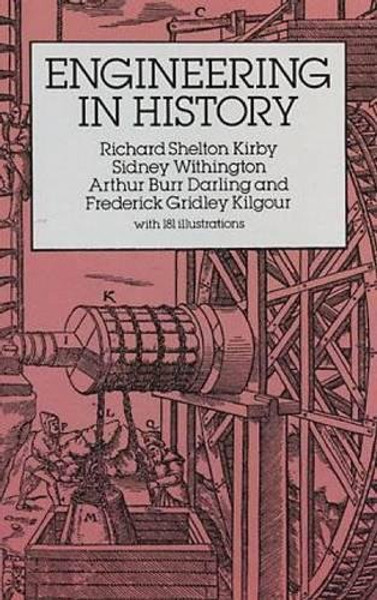Product Overview
With a minimum of technical detail, and in highly readable style, this book presents a fascinating overview of the development of engineering I Western civilization, from its origins to the twentieth century. The book is organized around the authors' division into eight primary events:
Food-producing revolution (60003000 B. C.)
Appearance of urban society (30002000 B. C.)
Birth of Greek science (600300 B. C.)
Revolution in power (Middle Ages)
Rise of modern science (seventeenth century)
Steam and the Industrial Revolution (eighteenth century)
Electricity and the beginnings of applied science (nineteenth century)
Age of automatic control (twentieth century)
Not an exhaustive history, this book focuses on those achievements whose impact on civilization, in the authors' view, has been most significant. In the case of specific inventions, machinery or other man-made creations, the book offers a comprehensive, detailed description, including an overall perspective, an analysis of component parts and their interrelationships, a presentation of essential dimensions, and techniques of construction or assembly. Implied throughout the text is the idea of technology as a creative near-artistic that plays a role in what Cassirer has called the process of man's progressive self-liberation. The book concludes with a well-balanced essay on the impact of engineering on society, in which the authors argue that technology must be subservient to ethical and aesthetic values.
Enhanced by 181 illustrations, Engineering in History is a superb blend of history and applied science that will interest not only engineers and students of technology, but any reader curious about the epochal strides man has made toward understanding, adapting to and learning to utilize his physical environment.
Food-producing revolution (60003000 B. C.)
Appearance of urban society (30002000 B. C.)
Birth of Greek science (600300 B. C.)
Revolution in power (Middle Ages)
Rise of modern science (seventeenth century)
Steam and the Industrial Revolution (eighteenth century)
Electricity and the beginnings of applied science (nineteenth century)
Age of automatic control (twentieth century)
Not an exhaustive history, this book focuses on those achievements whose impact on civilization, in the authors' view, has been most significant. In the case of specific inventions, machinery or other man-made creations, the book offers a comprehensive, detailed description, including an overall perspective, an analysis of component parts and their interrelationships, a presentation of essential dimensions, and techniques of construction or assembly. Implied throughout the text is the idea of technology as a creative near-artistic that plays a role in what Cassirer has called the process of man's progressive self-liberation. The book concludes with a well-balanced essay on the impact of engineering on society, in which the authors argue that technology must be subservient to ethical and aesthetic values.
Enhanced by 181 illustrations, Engineering in History is a superb blend of history and applied science that will interest not only engineers and students of technology, but any reader curious about the epochal strides man has made toward understanding, adapting to and learning to utilize his physical environment.








